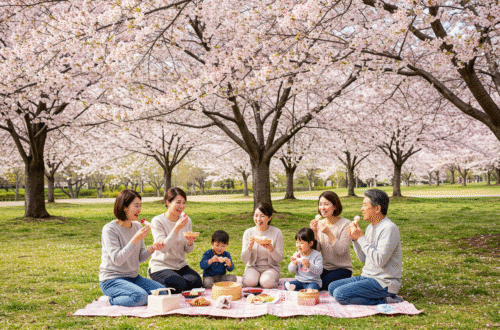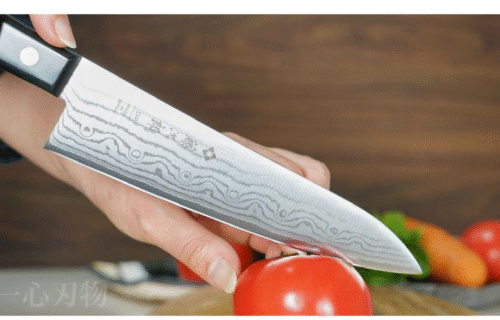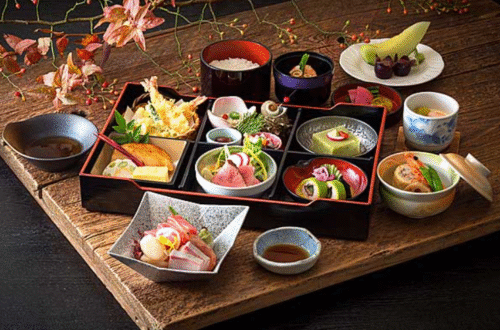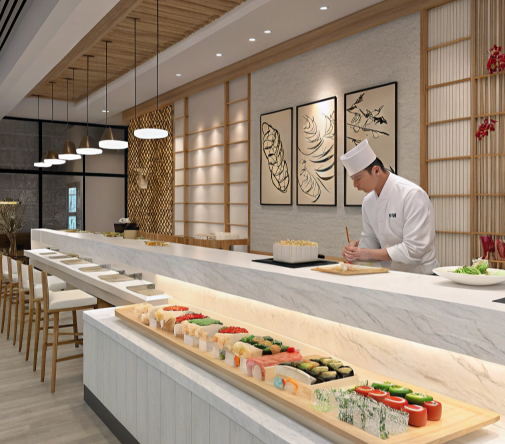
04-01. The Ultimate Sushi Guide: Everything You Need to Know to Experience Authentic Sushi in Japan
Welcome to Japan. And welcome to what will surely be the most memorable dining experience of your life.
If you’ve found your way to this page, you must have one big expectation in mind. That is, the dream of eating “authentic sushi” in Japan. The tranquil space you’ve seen in movies and guidebooks. The glossy pieces of sushi created by skilled craftsmen (Itamae) with their fingertips, as if by magic, behind the white wooden counter.
That imagination will make your journey the most exciting one possible. However, at the same time, you may feel a little anxious. “Is it okay for someone like me to walk into such a high-end restaurant?” “What if I embarrass myself because I don’t know the proper etiquette?” “I keep hearing the term ‘omakase,’ but what does it mean?”
Don’t worry. This article is your most reliable guide. We don’t just provide a list of restaurants. We’ve packed this guide with all the knowledge and secrets you need to understand the heart of sushi, its history, and its culture, so you can confidently step through the noren (the cloth hanging at the entrance of the store), connect with the craftsman, and create the best sushi experience of your life.
By the time you finish reading this guide, you won’t be a traveler afraid of sushi anymore—you’ll be a foodie who truly understands its value and can enjoy it with your heart. Let’s embark on an unforgettable culinary journey together.
Chapter 1: Understanding the Essence of Sushi – Essential Knowledge Before Your Journey
The best experiences come from quality knowledge. Why does Japanese sushi captivate people around the world? Let’s explore the secrets behind it.
The Brief History of Sushi: From Street Food to Global Art
Surprisingly, the origins of nigiri sushi, now synonymous with haute cuisine, can be traced back to street food sold in Edo (now Tokyo) in the early 19th century. At that time, Edo was a bustling city filled with busy craftsmen. This style was devised to allow them to quickly replenish their energy during work breaks, consisting of fresh seafood from Edo Bay (known as “neta”) placed on top of vinegared rice (known as “shari”).
In an era without refrigeration technology, ingenious methods such as marinating fish in vinegar or soy sauce (known as “zuke”) were employed to preserve freshness. This laid the foundation for the “Edo-mae” style of sushi that continues to this day.
Over time, sushi evolved from street stalls to restaurants, spreading across Japan and eventually around the world. Each step of the process was refined, and the quality of ingredients was pushed to its limits, elevating sushi from a simple meal to an “art form” that embodies the philosophy and aesthetics of the craftsman. The single piece of sushi you see at the counter encapsulates centuries of history and innovation.
The universe of neta and shari: the stars of sushi
Sushi is the ultimate harmony between two stars: neta and shari. Without either one, the best sushi cannot be created.
Neta (Ingredients): Jewels of the Sea
Neta refers to the ingredients placed on top of the rice. Their diversity is truly a universe within the sea. Here are some of the most representative ingredients. Knowing these will greatly enhance your enjoyment at a sushi restaurant.
- Maguro (Tuna): The king of sushi. Each part has a completely different flavor.
- Akami (Red Meat): The most common cut. It has a deep red color, is rich in iron, and has a refreshing umami flavor.
- Chu-toro (Medium-Fatty Tuna): A perfect balance of red meat and fat. It melts smoothly in your mouth.
- O-toro (Fatty Tuna): The fattest part, from the belly. Pink in color, the high-quality fat melts in your mouth the moment you take a bite, spreading a sweet flavor. It is truly a taste of bliss.
- White Fish (Shiromi): Characterized by a delicate and refined flavor.
- Flounder (Hirame): Mild yet deep umami flavor. Sometimes, it is seasoned with kelp (konbu-zume) to further bring out its umami flavor.
- Sea bream (Tai): Known as the “king of fish,” it is indispensable at celebratory occasions in Japan. It has a beautiful cherry blossom color and a refined sweetness.
- Silver-skinned fish (Hikarimono): It has a unique flavor and is one of the ingredients that most tests the skill of the chef.
- Kohada (Gizzard Shad): A symbol of Edomae sushi. The perfect balance of vinegar and salt brings out the individuality of the chef. A restaurant that serves this well is undoubtedly a good restaurant.
- Aji (Horse Mackerel): Often served with ginger and green onions, it has a refreshing flavor.
- Ika (Squid) and Tako (Octopus): Their unique texture is appealing. Cutting them into small pieces brings out their softness and sweetness.
- Ebi (Shrimp/Prawn): There are various types, from raw Ama-ebi (sweet shrimp) to Kuruma-ebi (carriage shrimp), which is boiled to concentrate its sweetness.
- Shellfish (Kai): Enjoy the crunchy texture. Popular varieties include scallops (Hotate) and red clams (Akagai).
- Sea Urchin (Uni): Creamy and rich, it is the essence of the sea’s bounty. It is often served in Gunkan-maki (warship rolls).
- Salmon Roe (Ikura): Salmon eggs marinated in soy sauce. The popping texture and rich umami flavor that spreads in your mouth are irresistible.
And the most important concept is “Shun”. This refers to the specific season when ingredients are at their most delicious and nutritious. Spring brings saury and clams, summer brings mackerel and eel, autumn brings mackerel pike and sardines, and winter brings yellowtail and flounder. Knowing the seasonal ingredients is like experiencing the four seasons of Japan through your taste buds.
Shari: The soul of sushi
Many people tend to focus on the ingredients, but sushi chefs unanimously say that “the life of sushi lies in the shari.” Shari is not just vinegar rice.
- Rice: Rice that is suitable for sushi, with little stickiness and firm grains, is selected.
- Vinegar: A blend of rice vinegar and red vinegar is used to create the restaurant’s unique flavor. Red vinegar, made using a traditional method from the Edo period, imparts a smooth aroma and depth of flavor.
- Temperature: The ideal temperature is around body temperature. This allows the fat in the toppings to melt just right, creating a harmonious sensation in the mouth. One of the reasons counter sushi is so delicious is this precise temperature control.
The time a chef spends shaping a piece of sushi is just a few seconds. Yet within those few seconds, they incorporate air between the grains of rice, creating a perfect texture that melts gently in the mouth.
The important role of supporting ingredients
- Gari: Thinly sliced ginger pickled in sweet vinegar. Eating it between pieces of sushi refreshes the mouth and allows you to clearly taste the flavor of the next piece of sushi.
- Wasabi: Its refreshing spiciness eliminates the fishy smell of the fish and enhances its flavor. Real wasabi is finely grated with a shark skin grater, giving it not only a sharp spiciness but also a rich aroma and sweetness.
- Shoyu (Soy Sauce): The final touch that completes the flavor of sushi. “Nikiri soy sauce,” which is directly applied to the ingredients by the chef, is made by heating soy sauce with sake and mirin to evaporate the alcohol, resulting in a smooth and mellow taste.
- Agari (Green Tea): Hot green tea served at the end of the meal. It is often made with powdered tea and helps to cleanse the mouth of any lingering oiliness.
Types of Sushi Restaurants: Which Door Will You Open?
In Japan, there are various styles of sushi restaurants to suit different budgets and purposes.
- High-end Sushi Restaurants (Counter):
- The main theme of this article. Enjoy the craftsmanship of the chefs from the best seats in the house—a once-in-a-lifetime experience. The budget is on the high side (from ¥20,000 per person for dinner), but it is well worth it.
- Conveyor Belt Sushi (Kaiten-zushi):
- An entertaining restaurant where sushi is served on a conveyor belt. Very reasonable, starting at around ¥100 per plate. Ideal for families and those who want to try a variety of dishes casually. Recently, more and more restaurants have started offering touch-panel ordering and high-quality food.
- Standing Sushi (Tachigui-sushi):
- A style where you eat standing at the counter without chairs. While it is fast and affordable, there are also many renowned restaurants that serve authentic Edo-style sushi, allowing you to experience Japanese daily life alongside local businesspeople.
- Takeout and Delivery Specialty Stores:
- Purchasing sets from department store basements (underground food halls) or specialty stores in the city and enjoying them at hotels or parks is also a good option.
Chapter 2: Practical Guide – Stepping Through the Sushi Restaurant’s Noren
Now that you have acquired the basic knowledge, it is time to put it into practice. From here on, we will explain the specific steps you need to take to ensure a smooth and enjoyable experience, from making a reservation to paying the bill.
The Art of Making Reservations: Paving the Way to Popular Restaurants
Many Michelin-starred and locally renowned sushi restaurants require reservations. It is almost impossible to walk in without a reservation.
Why are reservations necessary?
The best sushi restaurants prepare the highest-quality ingredients sourced that day exclusively for a limited number of customers. The chefs prepare their best performance for each reserved guest.
Reservation Methods:
- Online Reservation Sites: The most convenient method for foreign tourists. The following sites are available in English and are highly useful.
- Omakase: Specializes in top-tier restaurants like Michelin-starred establishments that are difficult to book.
- TableCheck / Pocket Concierge: A website that specializes in reservations for high-end restaurants.
- Hotel concierge: If you are staying at a luxury hotel, asking the concierge is the most reliable and easiest method. They have established good relationships with restaurants and may be able to secure reservations that would be difficult to obtain on your own.
- Phone: If you are confident in your Japanese, calling directly is another option, but many popular restaurants have limited phone hours.
Important points when making a reservation:
- Act early: Popular restaurants fill up more than a month in advance. Once your travel schedule is set, take action immediately.
- What to communicate:
- Allergies or disliked ingredients: This is extremely important. In “omakase” courses, it may be difficult to accommodate requests if not communicated in advance. Especially for shellfish, crustaceans, or specific fish, be sure to communicate accurately.
- Budget: If you’re concerned, you can also communicate your budget at the time of reservation.
Sitting at the counter: Beautiful manners to know
The moment you step through the curtain and are seated at the counter, your special experience begins. By knowing a few simple manners, both you and the restaurant staff can enjoy a pleasant time.
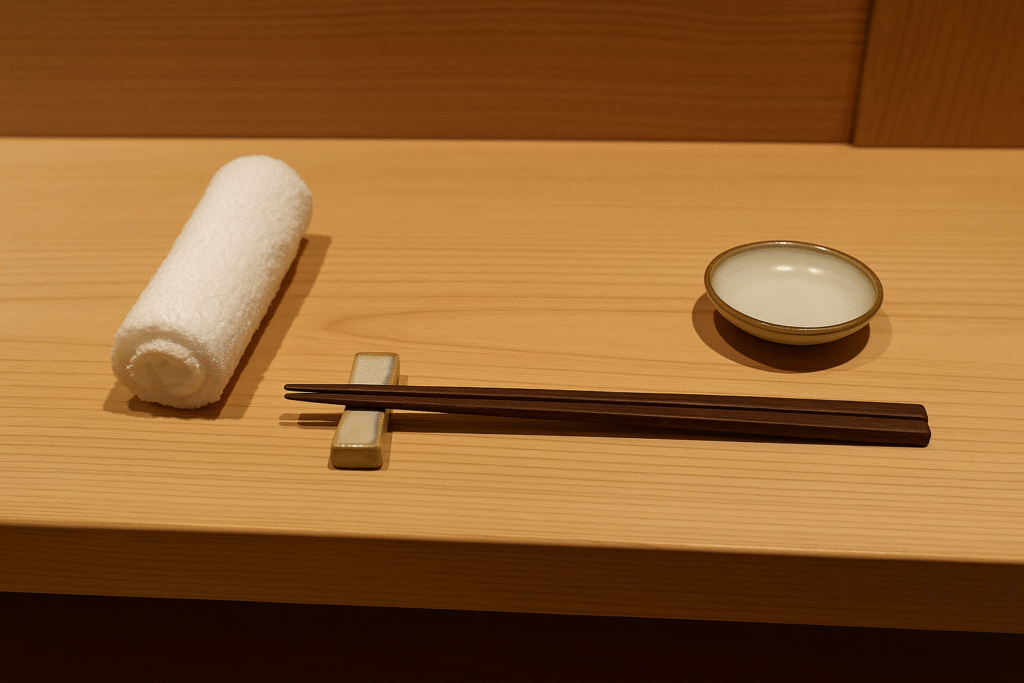
From entering the restaurant to sitting down:
- No perfume: Sushi is a dish that is enjoyed for its delicate aroma. Strong perfumes and colognes can interfere with the aroma of the food and disturb other customers. This is one of the most important rules of etiquette.
- Large bags and coats: The restaurant staff will often take care of your belongings, so leave them at the counter.
How to order:
Once seated, you will be given a warm towel (Oshibori). First, wipe your hands and calm your mind. Then, order your drink. Beer and sake are common choices, but tea (free of charge) is also perfectly acceptable.
Now, it’s time to order your sushi. There are two main methods.
Omakase – The most recommended method
“Omakase” means “I leave it up to you (the chef).” This is the ultimate ordering method, where the chef provides you with the freshest and best ingredients of the day, prepared in the best order and with the best cooking methods.
- Why is “omakase” good?
- You don’t have to worry about anything. Just sit back and wait for the magic to unfold before your eyes.
- You can enjoy the best seasonal ingredients in the best possible way.
- A relationship of trust with the chef may develop, and you may be served a special dish.
- The flow of “omakase”: Typically, it starts with a few small dishes (tsumami), followed by sushi.
- What if you’re full? The chef is watching your eating pace. If you’re getting full, feel free to say, “I’m getting full, so please make the next one the last,” or simply “Stop, please.”
Okonomi (Your Choice) – The Joy of Choosing Freely
This style allows you to order your favorite ingredients in any order you like.
- Ordering Theory: While there are no strict rules, it is generally recommended to start with lighter-tasting items and gradually move on to richer or fattier ones to better appreciate each flavor.
- Start: Whitefish like flounder or sea bream
- Mid-course: Squid, shiny fish, red meat
- Climax: Medium fatty tuna, fatty tuna, sea urchin, eel (simmered in sweet sauce)
- Finish: Rolls (such as kanpyo rolls), omelet (tamago)
- Many restaurants do not have menus, so pointing to the ingredients in the display case on the counter and saying, “This one, please (Kore o onegai shimasu / This one, please),” is also a good method.
Etiquette for eating: To enjoy sushi at its best
Now, the first piece of sushi has been placed in front of you. Here are a few tips to help you enjoy it to the fullest. The most important thing is to relax and enjoy yourself, but knowing these tips will allow you to savor the experience even more deeply.
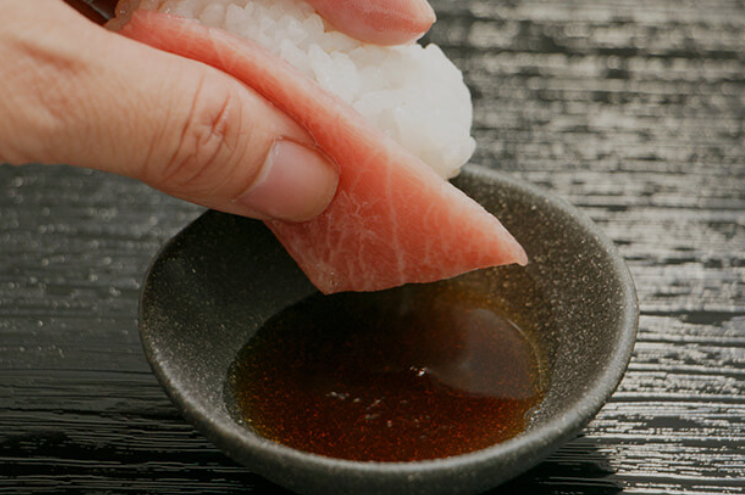
By hand or with chopsticks?
The answer is “either is fine.” Traditionally, eating by hand was considered the most elegant way to eat. Eating by hand allows you to enjoy the exquisite temperature and texture that the chef has carefully crafted without disturbing the shape of the rice. Please try it at least once. Of course, there is no problem with using chopsticks. Please use whichever method is easier for you.
How to use soy sauce
This is the most important point.
- Apply a small amount to the topping, not the rice: This is because the rice absorbs too much soy sauce, killing the sweetness of the rice and the flavor of the vinegar. It also causes the rice to fall apart.
- Tilt the sushi slightly and apply just a small amount of soy sauce to the tip of the topping.
- When soy sauce is already applied: Some toppings, such as eel, are already coated with a sweet sauce (tsume) or boiled soy sauce by the chef. These should be eaten as is, without adding soy sauce. The chef will say, “Sono mama douzo” (please eat as is).
- Gunkan-maki (sea urchin, salmon roe, etc.): These are difficult to add soy sauce to. Instead of pouring soy sauce into a soy sauce dish, an advanced technique is to pick up a piece of ginger with chopsticks, dip it in soy sauce, and dab it on the topping.
Should I eat it in one bite?
Yes, definitely in one bite. The chef calculates the balance between the toppings and rice, how it melts in your mouth, and how the aroma spreads, all when making the sushi. By eating it in one bite, you can fully experience that perfect harmony. If you feel that the bite is too big, especially for women, you can request “Please make the rice smaller” when making a reservation or placing an order.
The Role of Gari
As mentioned earlier, gari is used to cleanse the palate. After finishing each piece, try nibbling on a little bit. It will refresh your mouth, allowing you to enjoy the delicate flavor of the next piece with a fresh palate.
Communication with the chef
The real thrill of counter sushi is the live interaction with the chef.
- Photography: Before taking a photo, always ask for permission by saying, “May I take a picture?” Flash photography is strictly prohibited. Also, be considerate of other customers and avoid photographing them.
- Conversation: The chef is observing your eating pace and expressions. If you have any questions (“What kind of fish is this?”), feel free to ask. However, if the chef is focused on preparing sushi for other customers, it is considerate to wait a moment.
- Expressing gratitude: If you find the sushi exceptionally delicious, be sure to convey your appreciation. A simple “It’s delicious!” is the highest compliment for the chef.
Payment: A smart way to settle the bill
The perfect ending to a wonderful experience is a smart payment.
In the case of “omakase,” the course price is often fixed, but if you order additional items or drink expensive sake, the cost will be added accordingly.
Price range:
- Lunch: ¥5,000 to ¥15,000
- Dinner: ¥20,000 to ¥50,000 or more This is merely a guideline. It varies greatly depending on the class of the restaurant.
Payment methods:
Credit cards are often accepted at high-end restaurants, but some long-established, privately-owned restaurants may only accept cash. It is a good idea to bring extra cash just in case.
How to request the bill:
After your meal, tell the chef, “Okaikei o onegai shimasu (Check, please).” You may be able to pay at your table or at the cash register at the entrance.
Chapter 3: Advanced – Enjoying the Sushi Experience to the Fullest
Now that you’ve mastered the basics, you’re ready to take the next step and enjoy the world of sushi even more deeply.
Sushi and Drink Pairings: The Perfect Combination
The best meals require the best drinks.
- Sake: This is the classic pairing. We recommend junmai or ginjo sake, which are crisp and dry and won’t overpower the delicate flavors of sushi. The best thing to do is to ask the chef, “Please recommend a drink that goes well with sushi.”
- White Wine / Champagne: Surprisingly, crisp white wines (especially Chablis) and refreshing champagne pair wonderfully with the flavors of seafood.
- Bier: For the first drink, a cold draft beer (Nama Biru) is the best choice.
Instagram-worthy Sushi! Tips for Taking Beautiful Photos
You want to capture the beauty of sushi in photos, right? Here are some tips for taking the best shots while maintaining proper etiquette.
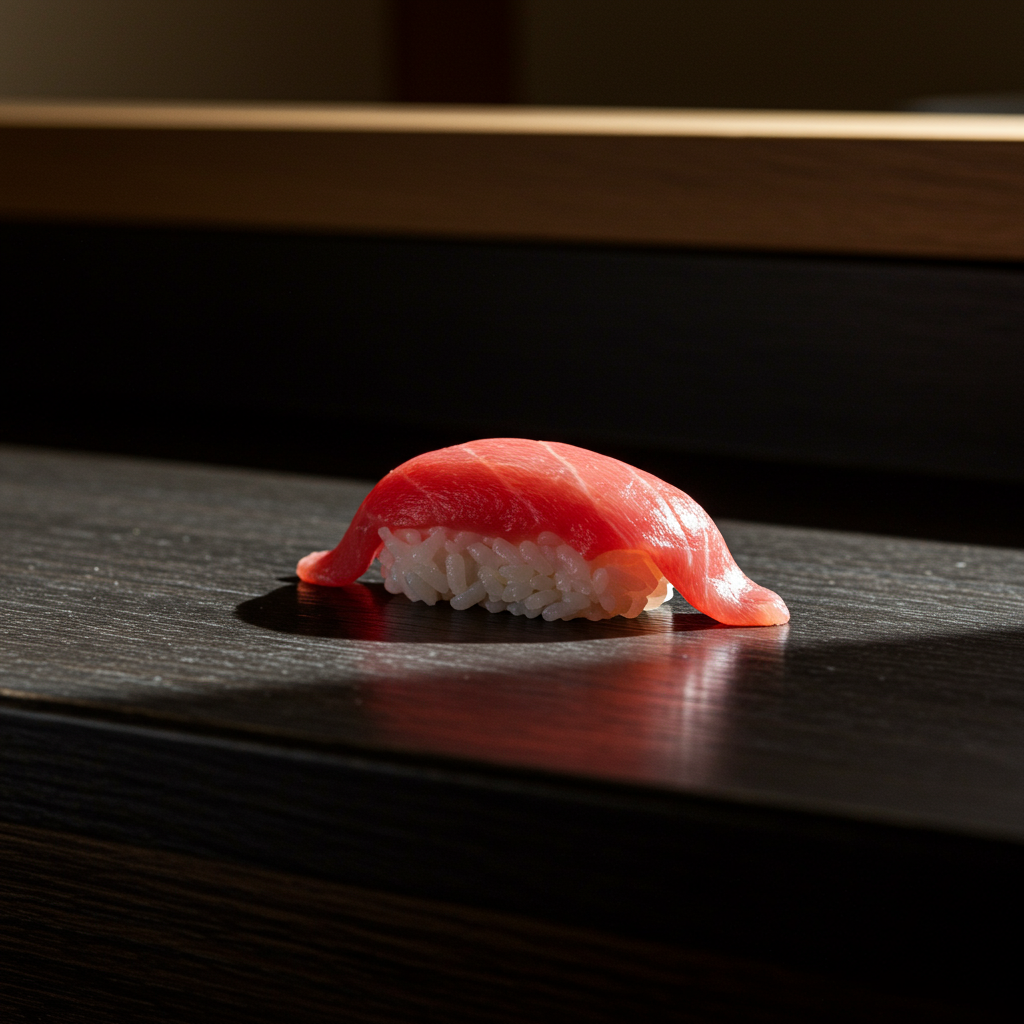
- Always ask for permission: I can’t stress this enough, but it’s the most important thing.
- No flash: Flash ruins the appearance of the food and the atmosphere of the restaurant.
- Shoot quickly: Freshness is key when it comes to sushi. You only have a few seconds after it’s placed on the plate. Don’t take too long to shoot.
- Make use of natural light: During the daytime, light from the windows provides the most beautiful lighting.
- Experiment with angles: In addition to shooting from directly above, try shooting at an angle to capture the three-dimensionality of the rice and toppings. Capturing the beautiful hands of the chef or the lively atmosphere of the entire counter can also make for wonderful memories.
Find hidden gems! Local restaurants that aren’t just tourist spots
Ginza in Tokyo and Gion in Kyoto aren’t the only places famous for sushi.
- Hidden gems in residential areas: There are hidden gems located a little away from the city center that are frequented by the local wealthy. These restaurants are relatively easy to make reservations at and offer excellent value for money.
- Sushi restaurants near fishing ports: Sushi restaurants near fishing ports such as Odawara, Kanazawa, and Hokkaido offer the freshest seafood. You can also enjoy the pleasure of encountering rare fish (local fish – Jizakana) that can only be eaten in that area.
- Tips for finding them:
- Tabelog: Japan’s largest gourmet website. Using the translation function, you can refer to rankings and reviews. If the rating is 3.5 or higher, you can’t go wrong.
- Google Maps: Refer to the number of reviews and ratings. With plenty of photos, you can get a good sense of the atmosphere of the restaurant.
The ultimate experience: eating sushi in the morning at the market
If you are an early riser, be sure to visit Toyosu Market (Tokyo) or a local wholesale market at your travel destination. Eating “morning sushi” at a sushi restaurant inside or around the market while feeling the liveliness of the market is a special experience. You can enjoy the freshest ingredients, which have just been auctioned off, at a reasonable price. This is a culinary adventure.
Chapter 4: Frequently Asked Questions (FAQ) – Answers to your final questions
We will answer any minor questions you may still have after reading this far.
Q1: Can I bring my children?
A: High-end counter sushi restaurants are often designed for adults to enjoy in a quiet atmosphere, and may not allow children (especially toddlers) to enter. Be sure to check when making a reservation. Conveyor belt sushi restaurants are ideal for families with children.
Q2: Are there vegetarian sushi options?
A: Yes, there are. In addition to traditional rolled sushi such as cucumber rolls (kappa maki), kanpyo rolls, and natto rolls, more and more restaurants are offering vegetable sushi made with avocado, bell peppers, mushrooms, and other ingredients. If you inform the restaurant that you are a vegetarian when making a reservation, they may be able to accommodate your request.
Q3: How much should I budget?
A: It depends on the restaurant and time of day, but here are some rough guidelines.
- Conveyor belt sushi: ¥2,000–¥4,000
- Stand-up sushi: ¥3,000–¥6,000
- Counter sushi (lunch): ¥5,000–¥15,000
- Counter sushi (dinner): ¥20,000–¥50,000+
Q4: What does “market price” mean?
A: This refers to ingredients whose prices vary depending on the day’s purchase price. It is mainly used for sea urchin and certain types of high-end seafood. If you are concerned about the price, it is not rude to ask, “How much is this?” before ordering.
Q5: What if I don’t like wasabi?
A: No problem at all. Just tell them “Wasabi nuki de onegai shimasu” (No wasabi, please) when you order. This is a very common request.
Q6: Is it okay if I don’t speak Japanese at all?
A: At high-end restaurants, there are often chefs and staff who can speak basic English. Additionally, if you order “omakase,” you won’t need to speak much at all. Pointing, using the simple phrases introduced in this article, and above all, a smile and an expression of “delicious!” will suffice for communication.
Q7: How different is the taste between conveyor belt sushi and counter sushi?
A: This is a common question. To put it simply, the experience is completely different. While conveyor belt sushi is also very delicious, counter sushi is a comprehensive art form that engages all five senses beyond taste—from the temperature of the rice, the harmony between the rice and toppings, the interaction with the chef, to the atmosphere of the restaurant. I highly recommend trying both and enjoying the differences.
Conclusion: Sushi is a journey that connects you to Japan
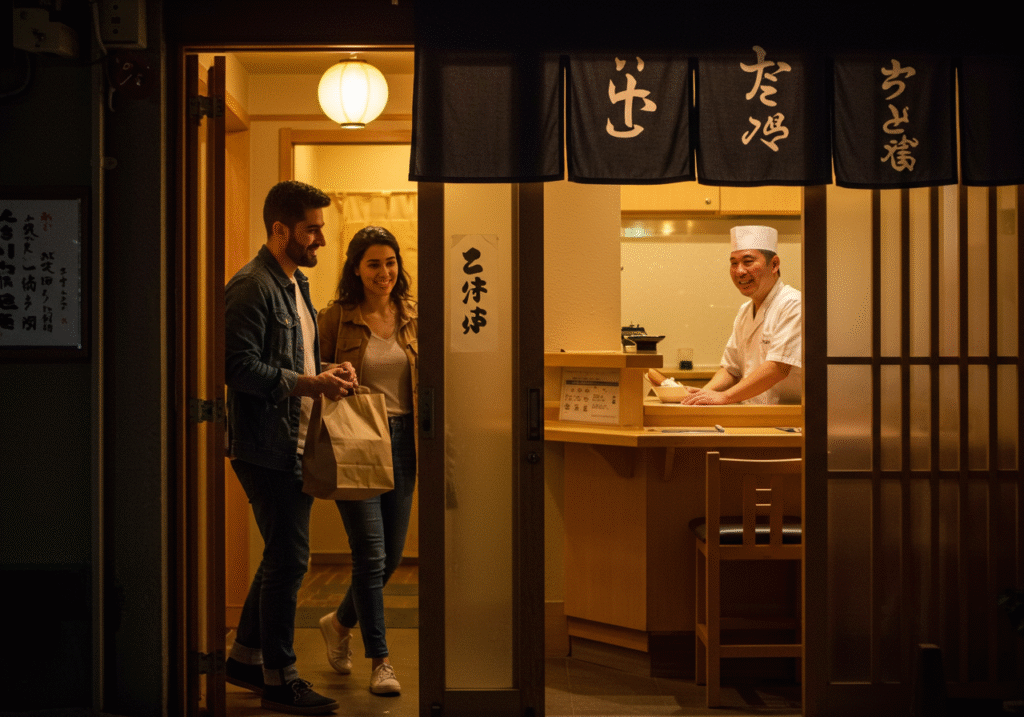
Thank you very much for reading this long guide.
By now, your mind is probably filled with excitement for the sushi adventure that is about to begin.
Remember, eating sushi is not just about satisfying your hunger. It is a cultural experience that allows you to connect with Japan’s rich nature, centuries-old artisan traditions, and the spirit of “omotenashi” (hospitality).
The silent dialogue with the artisan across the counter. The story behind each piece of sushi before your eyes. The harmonious blend of flavors that spreads across your palate the moment you take a bite. All of these elements will make your journey unforgettable.
There’s no need to hesitate in front of a high-end sushi restaurant anymore. With this guide, you’ve gained the knowledge and confidence to become the best guest.
Take a deep breath and step through the curtain.
Beyond it lies a single piece of sushi that will connect you to Japan and stay with you for a lifetime.
We sincerely hope your journey is filled with the ultimate culinary experience.

